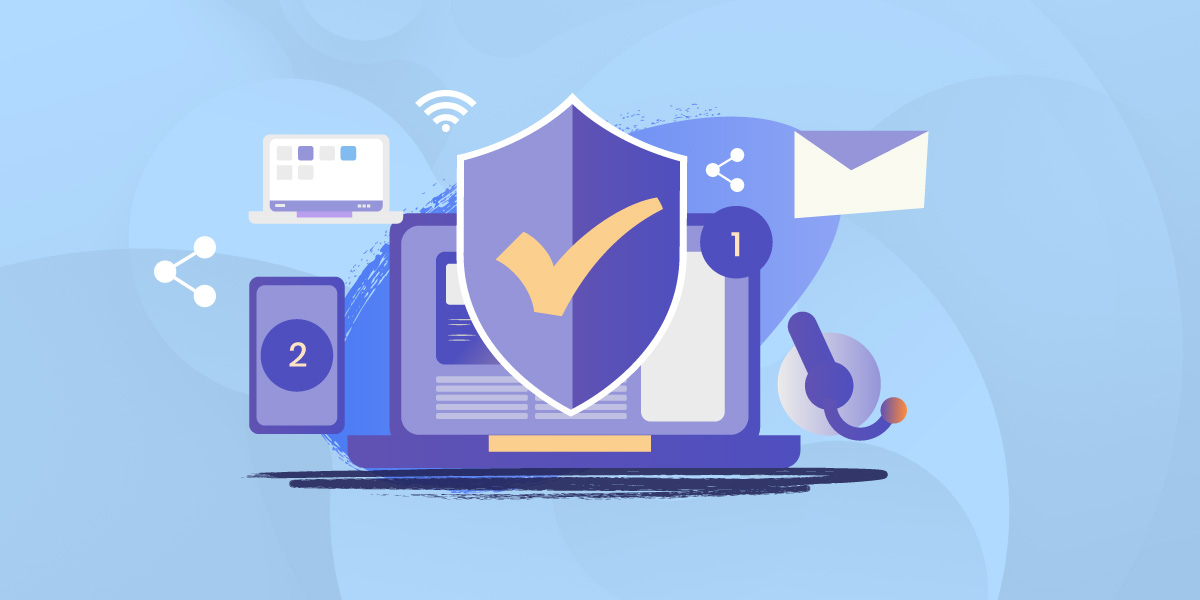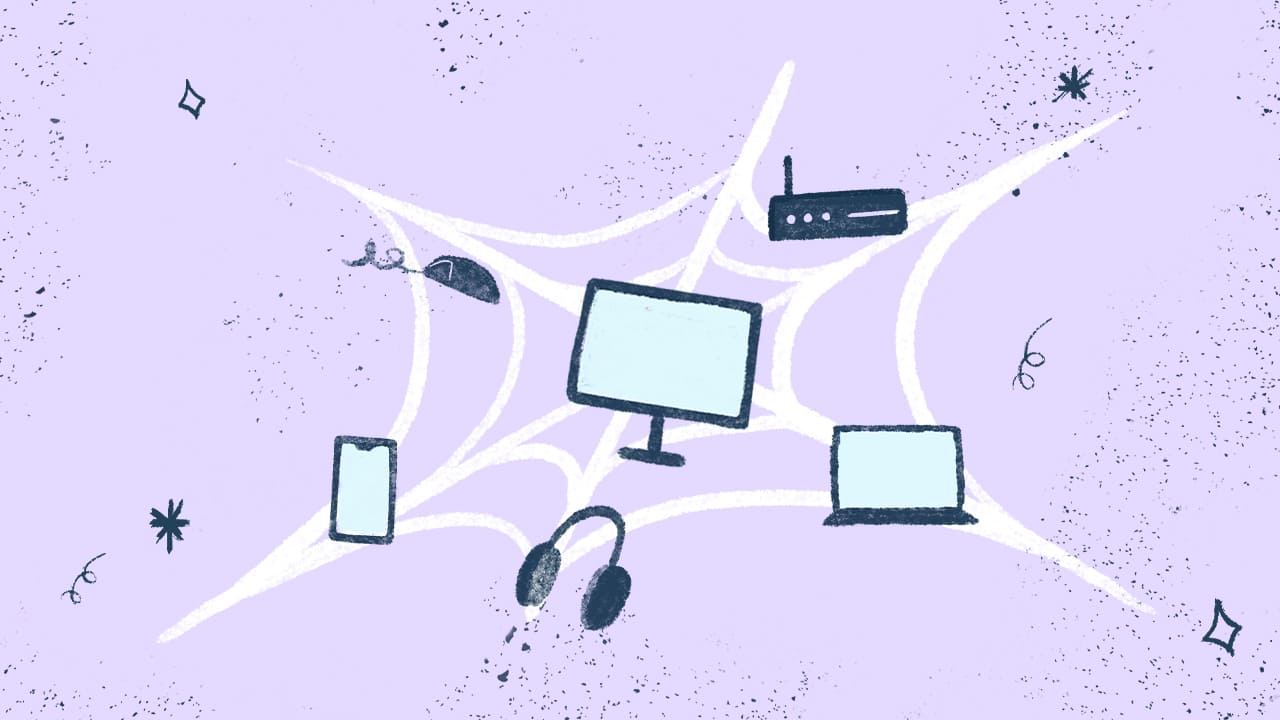Remote work is no longer a trend. In fact, it went from being a "nice-to-have" to becoming a reality that impacts both the culture and business of many organizations. The fact is that many people now work remotely, and for that reason alone, providing reliable IT support for remote workers has become a critical part of maintaining productivity, collaboration, and employee satisfaction.
But that’s just from a productivity perspective. Think for a moment about how employee turnover can affect your business. According to a recent FlexJobs report, 65% of employees are considering a job change, with flexible work options being a top priority. This means that if your remote IT support is lagging, you could be putting your employee retention and overall competitiveness at risk.
Caring for your remote employees and their IT support isn’t just important—it’s essential for fostering loyalty and ensuring operational continuity. But how can you achieve that while ensuring a positive experience for your remote workforce? Well, we’re here to help! In this blog post, we’ll share practical tips to help your organization streamline its approach. Whether you’re just starting this journey or looking to optimize your processes, there’s something here for everyone.

What is IT support for remote workers?
Before diving into specifics, it’s essential to define the key concepts. IT support for remote workers encompasses the services, tools, and assistance provided by IT teams to help remote employees work effectively from locations outside the traditional office. This includes resolving technical issues, managing remote devices, ensuring secure access to company networks, and deploying remote support software to streamline operations.
But who exactly are remote workers? Simply put, they are employees who perform their duties from a location other than the central office. Whether they’re working remotely full-time, in a hybrid setting, or logging in from a coffee shop while traveling, remote employees rely on a broad range of resources and support systems to stay productive and connected.
Why is IT support for remote workers important?
Defining IT support for remote workers is critical because remote work introduces unique challenges. Remote employees depend heavily on secure communication tools, such as Microsoft Teams, to collaborate, as well as robust security measures like virtual private networks (VPN) and two-factor authentication to protect company data. Without a clear framework, businesses risk exposing their corporate networks to security threats or creating gaps in support that frustrate remote users and decrease productivity.
Understanding the unique needs of a remote workforce allows organizations to address security concerns, optimize IT support, and ensure end user devices are always up to date. This not only helps simplify support issues but also ensures that sensitive information, such as laptop data or company resources, remains protected across remote work environments.
6 key challenges when providing IT services for remote workers
We’ve established that providing IT support for remote employees comes with its own set of unique challenges. But what exactly are these challenges? As IT Asset Management (ITAM) expert David Foxen shared in the 64th episode of the Ticket Volume – IT Podcast, during the pandemic, IT teams had no blueprint to follow, making the process of supporting remote workers particularly difficult.
|
|
"There was no blueprint. You couldn’t Google it and go, oh, how have other people done this during the pandemic? 'Cause you were living it.'" David Foxen |
Identifying these obstacles is the first step to creating effective solutions that ensure smooth operations and maintain employee satisfaction. Let’s explore some of the key challenges IT teams face when supporting remote workers.
#1: Ensuring device security and compliance
Cybersecurity remains one of the biggest challenges in supporting a remote workforce. Remote employees often rely on a mix of company-provided and personal devices, which introduces potential vulnerabilities. Additionally, remote work expands the attack surface, increasing risks of unauthorized access, phishing scams, and data breaches.
To address these challenges, IT teams must enforce strict compliance policies, use Mobile Device Management (MDM) tools, and ensure all devices are regularly updated with software patches and antivirus protection. Equally important is implementing robust security protocols, such as secure VPN, two-factor authentication, and data encryption, to protect sensitive company information.
Educating remote staff about best practices, like avoiding public Wi-Fi for work tasks, further helps maintain a secure remote work environment.

#2: Managing diverse technical environments
Remote workers operate in various environments using different operating systems, software, and networks. This diversity can lead to compatibility issues and complicate remote troubleshooting. IT support staff must be prepared to resolve issues related to a broad range of devices, software as a service (SaaS) applications, and communication tools like Microsoft Teams or Zoom.
Standardizing software and providing comprehensive guides for commonly used systems can simplify support issues while ensuring employees have the resources they need to stay productive.
#3: Offering timely support across time zones
For companies with a distributed workforce, IT support must be available across multiple time zones. Employees may need real-time troubleshooting for critical issues regardless of the hour, which can strain support teams and lead to delays.
Implementing remote support software with screen-sharing capabilities and creating a robust knowledge base for self-service support can help simplify support issues and reduce response times, ensuring employees work without disruptions.
#4: Managing inventory and ensuring device availability
Tracking and managing the physical devices used by remote workers—such as laptops, mobile devices, and accessories—can be a logistical challenge. Ensuring that hardware is properly inventoried, shipped, and returned when necessary requires efficient Inventory Management and policy enforcement.
Using dedicated IT Asset Management tools (such as InvGate Asset Management) to monitor the lifecycle of remote devices can help organizations keep their inventory up to date while maintaining control over company assets.
#5: Maintaining effective communication
Remote work can sometimes lead to miscommunication or employees feeling disconnected. Ensuring that teams are on the same page requires robust communication methods, such as real-time instant messaging, collaboration platforms, and clear guidelines for support escalation.
Encouraging the use of tools like Microsoft Teams, Slack, or Zoom, and ensuring support teams are approachable and responsive, can foster a positive experience for remote users and strengthen team dynamics.
#6: Adapting to evolving expectations
Today’s employees, especially younger generations, are accustomed to the convenience of modern apps and platforms, which has influenced their workplace expectations. They now anticipate quick and seamless provisioning of software and hardware, as well as real-time IT support.
Organizations must adapt to these expectations by streamlining their provisioning processes and ensuring IT teams are equipped to deliver fast, effective service. Offering comprehensive training and creating user-friendly self-service resources can help meet these demands while reducing the burden on IT staff.

7 best practices to provide IT support for remote workers
Delivering effective IT support to remote employees is essential for maintaining productivity, security, and overall satisfaction within your organization. Implementing the following best practices can help streamline IT services and address common challenges associated with supporting a remote workforce:
- Establish clear communication channels.
- Implement robust security measures.
- Provide remote access tools.
- Offer comprehensive training and resources.
- Standardize hardware and software.
- Develop a proactive support strategy.
- Ensure compliance with data protection regulations.
#1: Establish clear communication channels
Effective communication is the cornerstone of successful remote IT support. Utilize communication tools such as Microsoft Teams, Slack, or Zoom to facilitate real-time instant messaging, video calls, and collaboration among team members. Regular check-ins and team meetings help ensure everyone is on the same page, fostering a cohesive remote work environment.
#2: Implement robust security measures
Protecting company data and resources is paramount when supporting remote workers. Implement security protocols such as VPNs for secure access, two-factor authentication, and regular software updates to mitigate security threats. Educate remote employees about potential risks, including phishing scams, and establish clear guidelines for using personal devices to access company networks.

#3: Provide remote access tools
Equip your IT team with reliable remote support software that allows them to access and troubleshoot end-user devices efficiently. Tools like remote desktop applications enable IT staff to resolve issues promptly, regardless of the employee's location, thereby minimizing downtime and boosting productivity.
#4: Offer comprehensive training and resources
Empower remote employees by providing training on best practices for working remotely, including the use of communication tools, security protocols, and company policies. Develop a knowledge base with tutorials, FAQs, and troubleshooting guides to enable employees to resolve minor issues independently, reducing the burden on IT support teams.
As David pointed out, the expectations of the current workforce have shifted significantly. Today’s employees, particularly younger generations, are accustomed to the instant convenience provided by modern apps and platforms in their personal lives. This mindset has influenced their expectations at work, where they now anticipate quick and seamless provisioning of software and hardware.
|
|
"The current generation… they’re used to getting everything instantly on an app. So how can we provision software and hardware in a really quick time?" David Foxen |
By equipping employees with resources that align with these expectations, such as self-service tools and clearly defined processes, IT teams can streamline support, enhance the user experience, and maintain productivity in remote work environments.
#5: Standardize hardware and software
Standardizing the hardware and software used across your remote workforce simplifies support and ensures compatibility. Provide company-issued devices pre-configured with necessary applications and security measures. For employees using personal devices, establish clear guidelines and support only approved software to maintain security and efficiency.
#6: Develop a proactive support strategy
Adopt a proactive approach to IT support by regularly monitoring systems, performing routine maintenance, and anticipating potential issues before they escalate. Implementing Remote Monitoring and Management (RMM) tools can help IT teams detect and address problems early, ensuring a seamless experience for remote employees.
#7: Ensure compliance with data protection regulations
Remote work can complicate compliance with data protection laws and industry regulations. Establish clear policies regarding data handling, storage, and transmission for remote employees. Regularly audit remote work practices to ensure adherence to relevant regulations, protecting your organization from potential legal and financial repercussions.
What to look for in remote IT support software
As organizations embrace remote work, remote IT support software has become a cornerstone for maintaining productivity and resolving technical issues efficiently. The right software allows IT teams to assist employees working remotely by diagnosing, troubleshooting, and resolving problems without requiring in-person access to devices.
Not all remote IT support software is the same. There are several categories of tools, each designed to address specific aspects of IT support for remote workers. Choosing the right solutions requires understanding these categories and the unique value they bring to your IT operations.
Categories of remote IT support software
- Remote desktop software.
- IT Service Management (ITSM) tools.
- Communication and collaboration tools.
- Security and compliance tools.
#1: Remote desktop software
Remote desktop software is a vital tool for providing hands-on IT support to remote employees. It enables IT teams to access and control a user’s device as though they were sitting in front of it. This makes it easier to diagnose and resolve technical issues in real time, reducing downtime and frustration for remote workers.
Tools like TeamViewer, AnyDesk, and Splashtop are popular in this category because they provide seamless remote access, screen sharing, and file transfer capabilities. For businesses with a dispersed workforce, these tools are indispensable for ensuring that employees can return to work quickly after encountering technical issues.

#2: IT Service Management (ITSM) tools
ITSM tools, such as InvGate Service Management, are essential for managing and prioritizing IT support requests. These platforms centralize ticketing, automate workflows, and provide valuable insights through reporting and analytics.
By streamlining IT service delivery, these tools help support teams respond quickly to incidents, reduce response times, and track performance metrics. They’re especially useful for remote settings, where clear processes and accountability are crucial for delivering consistent and efficient support.
#3: Communication and collaboration tools
Effective communication is a cornerstone of successful IT support, especially for remote teams. Communication and collaboration tools like Microsoft Teams, Slack, and Zoom allow IT teams to stay connected with remote employees and provide immediate support when issues arise.
These tools enable real-time instant messaging, video calls, and collaborative troubleshooting, ensuring that remote workers feel supported and IT teams can resolve problems efficiently. In addition to technical support, these platforms foster better communication across the entire organization.

#4: Security and compliance tools
As remote work expands, so do the risks of security breaches and compliance challenges. Security and compliance tools are designed to protect sensitive company data, enforce security protocols, and ensure regulatory compliance across all devices used by remote employees.
Examples include NordLayer for secure virtual private networks, Bitdefender for endpoint protection, and CyberArk for privileged access management. These tools safeguard company resources by implementing robust security measures, such as two-factor authentication, data encryption, and regular security updates.
Conclusion
Supporting remote workers effectively requires more than just solving technical problems; it demands a strategic approach that combines the right tools, robust security measures, and proactive planning. By understanding the challenges unique to remote work and implementing best practices, your IT teams can create a seamless support system that boosts productivity, enhances employee satisfaction, and protects company resources.
Choosing the right remote IT support software is a crucial part of this process. From remote desktop tools to IT Service Management platforms and security solutions, these tools form the foundation of a secure, efficient, and collaborative remote work environment.
As remote work continues to shape the modern workplace, investing in the right strategies and tools will position your organization to thrive, keeping both your remote employees and business operations running smoothly.















